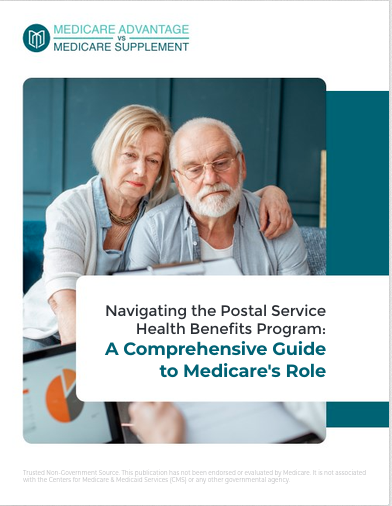Key Takeaways:
- Medicare’s Open Enrollment Period (OEP) is already happening and runs until December 7, 2024—now is the time to review your coverage for 2025.
- Understanding the different enrollment periods like the Initial Enrollment Period (IEP) and Special Enrollment Period (SEP) will ensure you don’t miss out on the coverage you need.
Simplify Your Medicare Enrollment in 2024 for 2025
We get it—Medicare can feel confusing, especially if you’re enrolling for the first time or thinking about making changes for the new year. But it doesn’t have to be overwhelming. Whether you’re turning 65 soon or already have coverage but want to make changes, this guide is here to help you understand Medicare enrollment for 2025 and how to make sure you’re covered properly.
Let’s break down the different enrollment periods, important timelines, and how you can avoid common mistakes.
Understanding the Key Enrollment Periods
Before we dive into the steps of enrolling, it’s important to know which enrollment period applies to you. Medicare isn’t a one-size-fits-all program, and when you sign up depends on your situation.
Initial Enrollment Period (IEP)
If you’re about to turn 65, your Initial Enrollment Period (IEP) is your first opportunity to enroll in Medicare. The IEP starts three months before your birthday month, includes your birthday month, and extends for three months after. That’s a seven-month window in total. This is when you should enroll in Medicare Part A (hospital insurance) and Part B (medical insurance) to avoid late enrollment penalties.
If you’re still working and have employer-provided coverage, you might not need to sign up for Part B right away. But it’s crucial to understand your options so you don’t face penalties later.
General Enrollment Period (GEP)
Missed your IEP? Don’t worry—you can still sign up during the General Enrollment Period (GEP), which runs from January 1st to March 31st every year. But keep in mind, if you enroll during the GEP, your coverage won’t start until July 1st. You may also have to pay late enrollment penalties for Part B, so it’s better to sign up during your IEP whenever possible.
Special Enrollment Period (SEP)
Certain life events qualify you for a Special Enrollment Period (SEP), allowing you to enroll outside of the standard windows. For example, if you lose employer-sponsored coverage, you’ll get an SEP to sign up for Medicare. This is a valuable option because it means you won’t face late enrollment penalties if you’ve had qualifying coverage up until that point.
Open Enrollment Period (OEP)
The Medicare Open Enrollment Period (OEP) happens every year from October 15th to December 7th. This is your opportunity to make changes to your current Medicare coverage. If you’re already on Medicare but want to switch plans, now is the time. Any changes you make during this period will take effect on January 1, 2025.
This window is crucial because it’s when you can enroll in or switch Medicare Advantage (Part C) or Medicare Prescription Drug (Part D) plans. Maybe your current plan no longer fits your needs, or your prescriptions have changed—this is the time to reassess your coverage.
Medicare Advantage Open Enrollment Period (MA OEP)
Already enrolled in a Medicare Advantage plan but having second thoughts? From January 1st to March 31st, you can switch Medicare Advantage plans or return to Original Medicare during the Medicare Advantage Open Enrollment Period (MA OEP). Keep in mind, though, this period is only for those who are already enrolled in a Medicare Advantage plan.
How to Ensure You’re Covered Properly for 2025
The key to getting the right Medicare coverage for 2025 lies in understanding your needs and reviewing your current plan. Here’s how you can make sure you’re set for next year:
1. Review Your Current Coverage
It’s important to look at your current plan and ask yourself a few questions: Does it still fit your healthcare needs? Have your prescription medications changed? Are your doctors still in-network? Sometimes, plans change their coverage rules or networks, so what worked for you in 2024 might not work as well in 2025.
If you have a Medicare Advantage or Part D plan, look for any Annual Notice of Change (ANOC) letters you received from your provider. This document details any changes to the plan for the next year, so you’re not caught off guard.
2. Consider Your Healthcare Needs for 2025
Life changes, and so do your healthcare needs. Think about whether you’ll need more (or less) coverage next year. Are you managing a new health condition? Do you anticipate more doctor’s visits or new prescriptions? If so, make sure you’re looking at plans that offer robust coverage for what you need.
3. Shop Around
Even if you’re happy with your current plan, it doesn’t hurt to compare other options. Medicare plans, especially Medicare Advantage and Part D, can change their premiums, deductibles, and co-pays every year. Shopping around during OEP could save you money or offer better coverage for your health needs.
Make sure to use the Medicare Plan Finder tool on the Medicare website to explore your options. It’s a user-friendly way to see all the available plans in your area, compare costs, and find out which ones cover your prescriptions.
4. Know the Deadlines
Missing deadlines can lead to delays in coverage or late penalties, which nobody wants. Mark your calendar for the important enrollment dates:
- October 15 to December 7, 2024: Open Enrollment Period (OEP) for 2025.
- January 1 to March 31, 2025: Medicare Advantage Open Enrollment Period (MA OEP) to switch or leave Medicare Advantage.
- January 1 to March 31, 2025: General Enrollment Period (GEP) if you missed your IEP and SEP.
Once you make any changes during OEP, your new coverage will start on January 1, 2025.
Mistakes to Avoid When Enrolling
While Medicare might seem straightforward, a few common mistakes could throw a wrench in your plans. Here’s what to avoid:
- Not signing up for Part B on time: If you’re delaying Part B because you’re still working and have employer coverage, make sure you understand when your SEP will begin once you retire. Missing this could lead to costly penalties.
- Assuming your plan stays the same: Medicare Advantage and Part D plans can change year to year, so don’t assume your 2024 plan will look the same in 2025. Always review your plan options during OEP.
- Ignoring network restrictions: If you’re on a Medicare Advantage plan, make sure your preferred doctors and hospitals are still in-network for 2025. Out-of-network care can lead to higher costs or lack of coverage entirely.
Helpful Tools to Make Enrollment Easier
While it can feel overwhelming to choose the right plan, there are plenty of resources available to help you navigate the process.
- Medicare Plan Finder: This online tool on the official Medicare website allows you to compare Medicare Advantage and Part D plans. You can filter by costs, coverage options, and your specific needs.
- State Health Insurance Assistance Program (SHIP): SHIP offers free counseling to help you understand your Medicare options. Every state has its own SHIP office, and they can assist you one-on-one.
- Medicare.gov: The official website is loaded with helpful articles, FAQs, and forms to guide you through your Medicare journey.
Stay Ahead of the Curve—Enroll Now for a Stress-Free 2025
By taking the time to review your coverage, shop for the best plan, and avoid common pitfalls, you can ensure your Medicare plan for 2025 fits your healthcare needs and budget. Don’t wait until the last minute—enroll now to make sure you’re set for January 1, 2025.
And remember, once you’ve made your choice, sit back and relax knowing you’ve taken control of your healthcare for the upcoming year.










